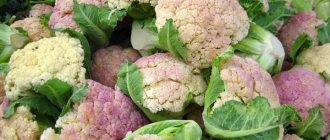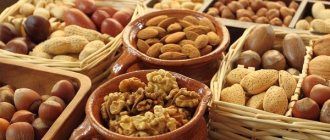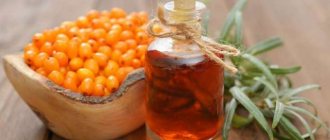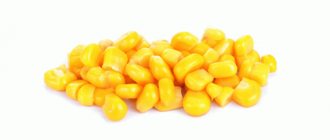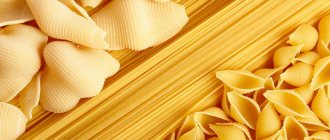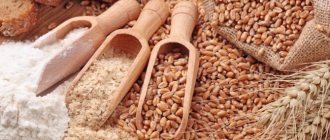Benefit
The beneficial properties of the product are as follows:
- It is easily digestible up to 91% of the total mass.
- Includes unique vitamin A (retinol). This component is needed to perform biochemical functions in the body. Without vitamin A there will be no normal metabolism. Also, when it is deficient, the functions of cell membranes are disrupted and new cells do not grow. Vitamin A serves to support the immune system and protects the body from respiratory and digestive infections. Retinol protects the mucous membrane, supports and restores its epithelium and skin. Vitamin A accelerates the healing of wounds and ulcers, improves the characteristics of new tissue, and reduces the risk of infections, which is very important for stomach ulcers. Retinol is an antioxidant that is used to prevent cancer.
- The butter is made from milk fat, which is necessary for the normal development of the embryo and the harmonious growth of children.
- Vitamin P is needed for cellular metabolism and has an anti-sclerotic effect.
- Phospholipids make the body resistant to stress.
- When feeding a baby, oil improves the composition of breast milk.
- The product is useful for patients after operations on the digestive organs.
Is it possible to eat butter if you have gastritis? Considering the benefits, the product must be used. But, as with other foods, you need to stick to the norm.
Useful tips
Inflammation of the gastric mucosa is a painful, difficult to cure disease. For treatment to be successful, you must strictly adhere to the medications prescribed by your doctor. As well as a diet that includes giving up a certain list of foods and lifestyle changes. Patients are encouraged to switch to eating small, frequent portions rich in vitamins.
Key tips worth noting:
- Excessively hot and cold foods are prohibited.
- Patients are advised to avoid spicy and sour foods and foods.
- Alcohol and smoking are prohibited.
- Fatty meats and broths are contraindicated for consumption.
- During an exacerbation, patients with gastritis are offered to eat porridge cooked in water.
- Depending on the improvement in the condition after the exacerbation of the disease subsides, the diet is expanded with new products.
- Types of food preparation: stewing, baking, steaming, boiling. Vegetables must be pureed.
Allowed foods for gastritis
- Cereals: semolina, buckwheat, rice, oats, and others. Pasta.
- Dietary soups: vegetable, dairy, with boiled cereals.
- Meat puree.
- Lean meat and fish.
- Yesterday's bread, biscuits, pastries with berries, with meat.
- Steamed vegetables.
- Berries and fruits.
- Dairy products: milk, kefir, cottage cheese and low-fat cheese.
- Butter
- Scrambled eggs.
- Greenery.
Foods that should be excluded from the diet
- Millet, pearl barley, corn, beans.
- Rich broth.
- Fatty meat, canned food.
- Fresh bread.
- Onions, radishes, cabbage, cucumbers, spinach.
- Sour vegetables and fruits.
- Fatty dairy products.
- Factory-made sauces. Ginger.
- Carbonated drinks, concentrated juices, strong tea and coffee.
Reasons for giving up dairy products
Not all people with digestive diseases can consume fermented milk products, including butter. This is due to several reasons:
- If you have high acidity, it is undesirable to consume milk products. Kefir, yogurt, cottage cheese, cheese, fermented baked milk, and sour cream contain lactic acid, which increases acidity as it penetrates the stomach. With inflammation of the mucous membrane, this causes exacerbation of gastritis and increased symptoms.
- But you can eat non-acidic milk products only if the products are tested by the manufacturer and meet quality standards. It should not contain stabilizers, dyes, preservatives, or artificial substances.
For gastritis with high acidity, butter can be consumed. This is due to the low content of lactic acid, but you need to adhere to the norm - 25 g per day. The product will also be useful for low acidity. It is allowed to consume homemade milk, unleavened cheese, and cottage cheese.
Oil for gastritis should be limited during an exacerbation of the disease. In the first days, you need water with the addition of lemon juice (a few drops), unsweetened compote, and rosehip decoction. For gastritis with low acidity, butter can be consumed, but within reasonable limits. Restriction is required during an exacerbation. Butter for erosive gastritis is also allowed, but in moderation.
The diet of patients with gastritis is not as varied as that of healthy people. Butter has beneficial properties that are necessary for digestive diseases. It should not be completely excluded.
Is it possible to use butter for gastritis?
For patients with gastritis, the saturation of foods with vitamins is important. Butter contains vitamins E, A, D, PP, beta-carotene, and B vitamins.
The beneficial effect of the oil also lies in the enveloping effect that the product has on the mucous membrane, so its use can calm erosive processes in the stomach. This property is relevant for ulcerative lesions of the gastrointestinal tract.
Consuming the product in large doses can harm the body: it can lead to increased cholesterol levels and excess weight.
With increased acidity
It is known that for gastritis with high acidity it is recommended to avoid consuming dairy products.
Yogurt, kefir, cottage cheese, and cheese contain a high concentration of lactic acid. The entry of these products into the stomach leads to increased acidity, which can worsen the symptoms of the disease.
However, even with hyperacid gastritis, the consumption of non-acidic dairy products is allowed It is very important to monitor the composition of the product: there should be no dyes, preservatives, or stabilizers.
Thus, for gastritis with high acidity, it is allowed to consume butter , homemade milk, and cottage cheese.
At low
For hypoacid (low acidity) gastritis, butter can be consumed in moderate dosage . As for healthy people, the norm is ~25 g per day.
Ulcer
In case of exacerbations of gastritis, you should stop eating butter in the first days. During this period, it is recommended to eliminate the load on the stomach as much as possible.
You can drink water with a small amount of lemon juice, compotes without sugar, or a weak decoction based on rose hips. Various jelly based on flax or oatmeal.
Why can’t margarine and spread (fat product)?
The permission to use butter applies only to the natural product . However, today, spreads and outright margarine, which have nothing to do with healthy oil, are often sold under the guise of butter.
For patients with gastritis, margarine and spread are contraindicated for the following reasons:
- it always contains emulsifiers;
- Preservatives must be added to it, since without them the shelf life of the product will be short;
- the spread itself does not have a very attractive appearance, so manufacturers add flavorings and dyes to it;
- spreads contain many elements that can be dangerous - these are trans-isomers, the use of which is fraught with the development of pathologies of the cardiovascular system, cancer, and chronic fatigue;
- The product is based on low-quality vegetable oils (we are not talking about sunflower or olive oil, but about harmful palm oil).
According to information on Wikipedia according to GOST R 52100-2003, “Refined spreads and mixtures. General technical conditions.”, spreads are divided into three subtypes:
- creamy vegetable contain more than 50% milk fat (closest to natural butter)
- vegetable-cream contain from 15 to 49% milk fat
- vegetable fats do not contain milk fat (almost pure margarine)
The difference between a spread and margarine is that in spreads the use of hydrogenated fats is limited and the content of trans isomers of fatty acids is regulated, while in margarine there are practically no such restrictions.
The word “butter” should not appear on the packaging of the spread. It must be clearly written that it is a creamy vegetable, vegetable creamy or vegetable fatty product (depending on the composition).
Choice
For butter to be effective for gastritis, you need to choose a quality product. You need to pay attention to the following nuances:
- Price. High-quality oil cannot be cheap. If its price is less than 80 rubles, then most likely it contains vegetable fats, for example, palm oil. And its use is undesirable.
- Packaging. It should bear the inscription “STR”, which means “compliance with technical regulations”. It is important to mention the correct GOST. For example, if “R 52178-2003” (GOST margarine) is indicated and it is indicated that it is butter, then this is a deception.
- Name. The packaging should indicate that the butter is butter, peasant, traditional or amateur. Another name indicates the presence of additives.
- Fat content. A quality product has an indicator of 72%. Low percentages indicate counterfeiting and the presence of harmful components such as emulsifiers and flavorings.
- Packaging material. It is advisable to purchase oil in foil packaging rather than paper, since such material better protects the product from the sun's rays.
- Best before date. A natural product is stored for no more than a month; if another indicator is indicated, then this oil is unnatural.
- Color. It should be slightly yellowish; if the oil is very white, then it contains vegetable fats. And the yellow color indicates the presence of dyes.
- Feel. This product melts in your mouth. The fake usually takes a long time to melt, and the taste is not entirely attractive. Real butter has a pleasant milky taste.
- Spreading. High-quality products lubricate well. If it crumbles, then it contains water to save raw materials.
- Butter should have no odor. The less pronounced the aroma, the better.
Storage
In order for butter to be as beneficial as possible for gastritis, it must be stored correctly. It needs to be placed in an oil can - a special container with a lid. You should not leave the product in its packaging for several reasons. This is due to the oxidation process, which reduces shelf life. The oil absorbs extraneous aromas, and the oil dish protects against this. It is better to place it away from strong-smelling products.
A suitable temperature is 3-6 degrees, which will preserve the butter for a month. If you buy it for future use, it is better to place it in the freezer, where it can be left for up to six months. If dried or yellowed edges appear on the product, they must be trimmed off before eating.
Beneficial features
Everyone knows the beneficial properties of dairy products. Butter contains them in concentrated form, as it is created by whipping cream and forming a suspension.
- It is rich in vitamin A, which accelerates metabolism and normalizes metabolism, as well as improves immunity.
- When milk fats enter the body, they coat the intestinal walls, soothing irritation and normalizing the acid balance. Oil is absorbed better than other products, without forcing the body to make increased efforts to process it.
- Contains phospholipids that help fight stress and its manifestations.
- High vitamin P content protects against atherosclerosis.
There is a misconception that consuming this product contributes to the formation of fatty plaques in blood vessels due to the cholesterol content. However, milk fat is the safest of animal fats. The substances it contains help fight cardiovascular diseases and prevent the development of thrombosis. Carcinogens arise only during heat treatment, for example, combustion. Even healthy people should not eat it in this form.
It is important to remember that only natural products have these properties. Substitutes, spreads and oils with additives do not carry anything useful; on the contrary, they can cause harm to the body.
The benefits of homemade oil
You can make your own butter. Then it will be free of taste improvers, impurities and preservatives. The main component is considered to be top quality cream or sour cream. Preparation can take from several minutes to hours, it all depends on the technical component.
If you prepare the butter by hand (in a wooden masher), you will get a delicate product, but if you prepare it in a mixer, it will be coarser. Another advantage of homemade products is that it can be mixed with various additives - garlic, onions, herbs.
Preparation
To prepare, you will need thick heavy cream (1 liter), which must be transferred to a bowl for whipping. You need a whisk to beat everything until you get a granular mass. You can take a spoon or fork. Then you need to knead the mass with your hands, and then the granular part will separate into oil and liquid, which needs to be drained, and knead the composition further. When you get a dense ball, you need to rinse it with cold water. At this point, the preparation of the butter is completed; it can be placed in the tray. The product should be flattened and placed in the freezer for several hours.
To obtain 1 kg of butter, 2 kg of cream is required, and its fat content must be at least 36%. And to obtain 2 kg of cream, about 25 liters of milk are spent. This applies to industrial and home production. Thus, to obtain 1 kg of butter, about 25 liters of milk are needed.

